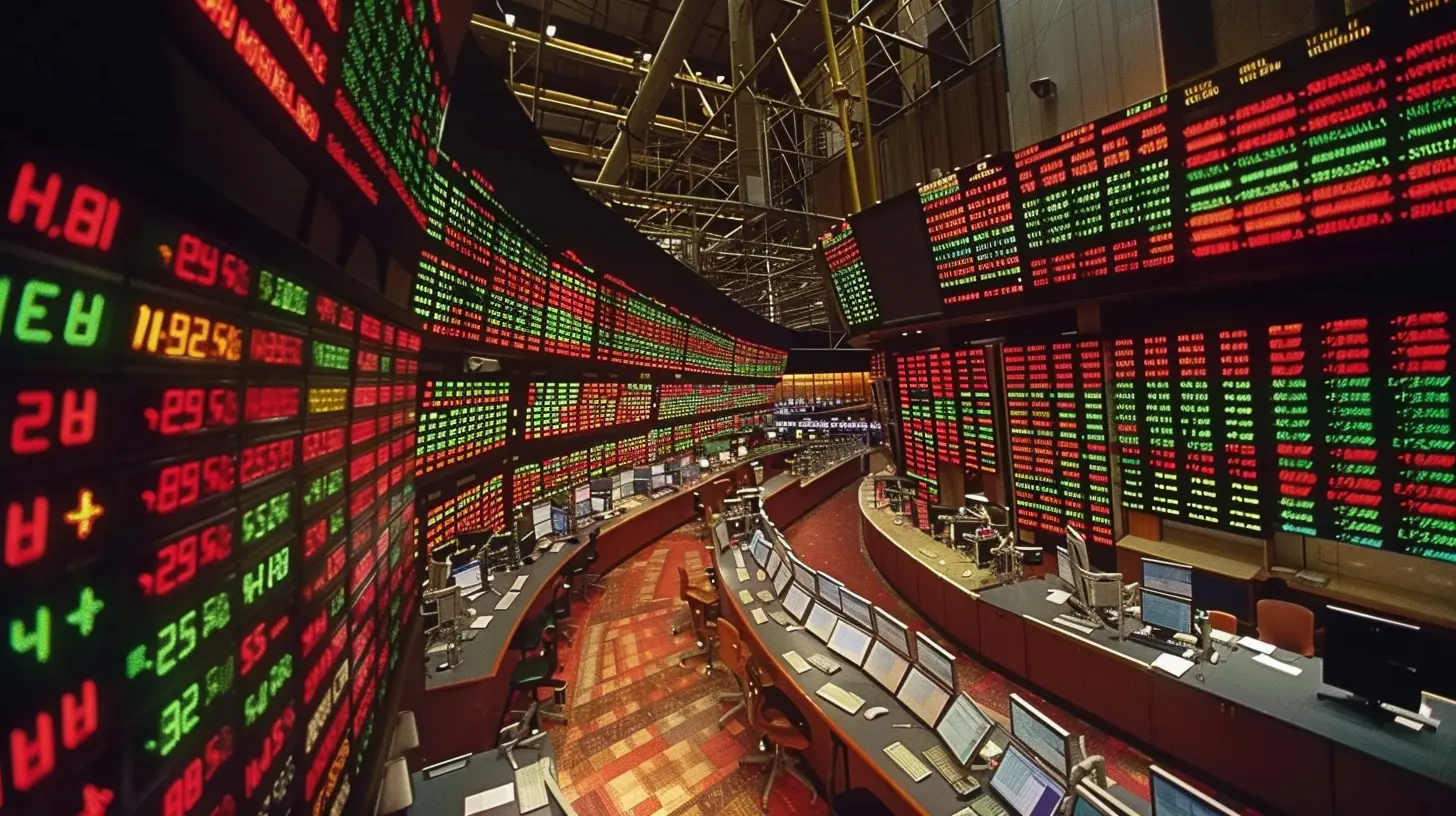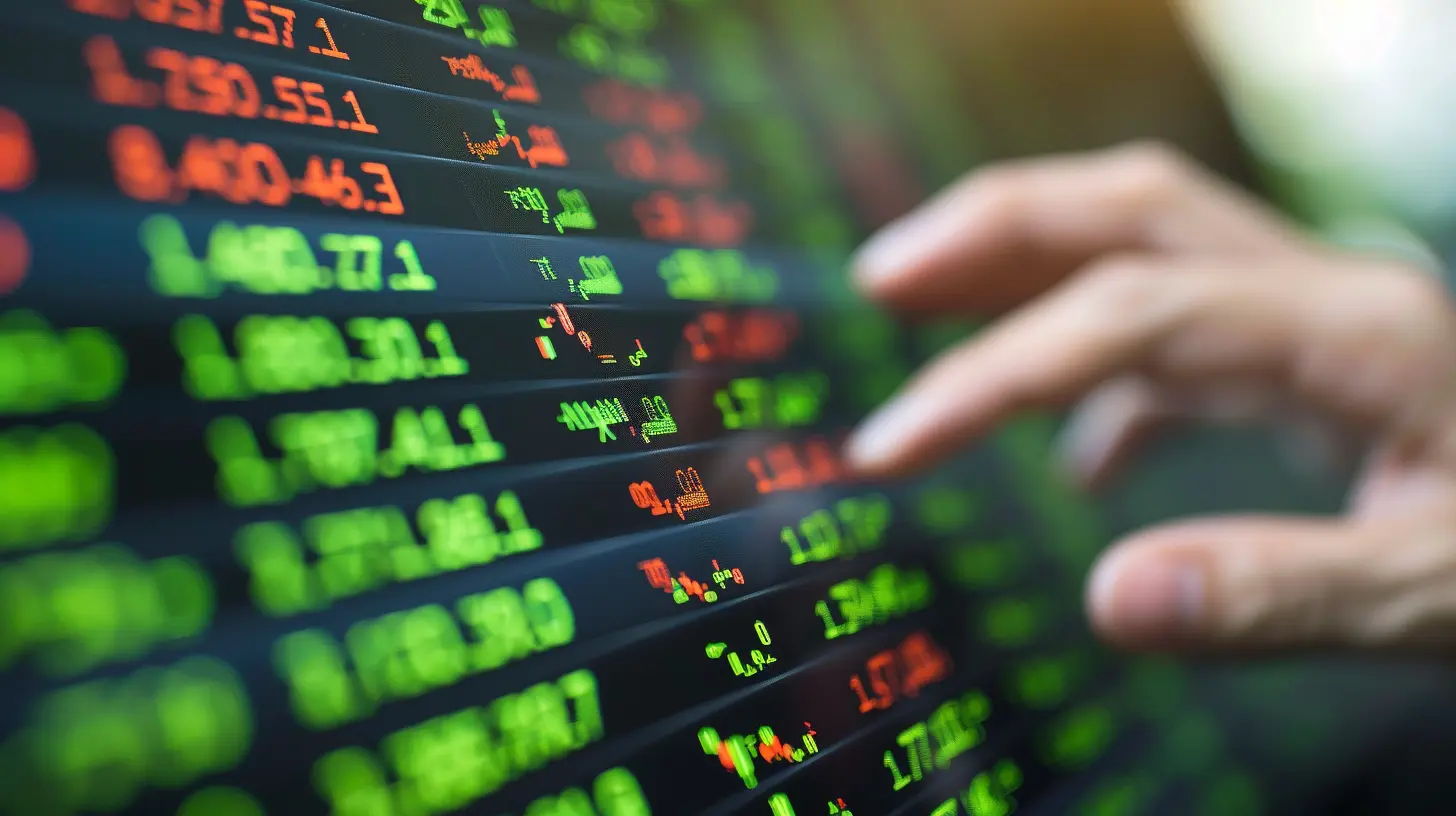The Role of Market Manipulation in Speculative Trading
2 August 2025
Ever dived into stock trading or crypto and thought, “Wait a second… something fishy’s going on here”? You’re not alone. Speculative trading can feel like the Wild West, and one of the biggest outlaws roaming the territory is market manipulation.
But what exactly is market manipulation? Why do people do it? And how does it impact speculative trading?
Grab your coffee (or energy drink), because we’re about to break it all down in plain English — no finance degree required.
What is Market Manipulation, Anyway?
Let’s keep it simple. Market manipulation is when someone deliberately interferes with the natural forces of supply and demand to influence the price of an asset — stocks, cryptocurrencies, commodities, you name it. The goal? To mislead other traders and make a profit.Sounds shady, right? That’s because it is. In most regulated markets, it’s totally illegal. But that hasn’t stopped people from being creative about it — especially in speculative markets where the rules can be a bit more... flexible.
Understanding Speculative Trading
Before we go too deep, let’s take a quick pit stop: What even is speculative trading?Speculative trading is when investors buy and sell financial instruments not because they believe in the long-term value, but because they’re hoping to make quick profits from short-term price movements. Think of it like betting on a horse race — except the horse is a stock, a cryptocurrency, or even a random meme coin.
These traders take on higher risks, and guess what? Higher risks often attract manipulation.
Why Market Manipulation Thrives in Speculative Trading
Picture a crowded casino. Everyone’s trying to win big, the stakes are high, and emotions are running wild. That’s the speculative market in a nutshell — a perfect environment for manipulators to swoop in.Here’s why:
1. Volatility is Their Playground
Speculative assets are notoriously volatile. Prices swing up and down like a yo-yo. That’s music to a manipulator’s ears because it gives them opportunities to pump prices up or crash them down quickly.2. Lack of Regulation
Many speculative markets — especially crypto — aren't as tightly regulated as traditional markets. Fewer rules = more room for shady moves.3. FOMO Is Real
Fear of Missing Out (FOMO) drives tons of traders to act irrationally. Manipulators know this and use it like a puppet string to yank the market in the direction they want.
Common Market Manipulation Tactics
Let’s pull back the curtain a bit — manipulators have a toolbox of tricks. Some are low-key, others are in-your-face. Here are the big ones you should know about:1. Pump and Dump
This one’s a classic. A group hypes up a low-value asset (the pump), gets others to buy in, then sells it off once the price spikes (the dump). The result? The price crashes, and the latecomers are left holding the bag.This tactic is especially common in penny stocks and crypto tokens with low market caps.
2. Spoofing
Spoofing is like playing Jedi mind tricks with the order book. A trader places large fake buy or sell orders to create a false sense of demand or supply — then cancels them before execution. Other traders react, and the manipulator profits from the chaos.3. Wash Trading
In wash trading, manipulators are basically trading with themselves. They buy and sell the same asset multiple times to create artificial volume and attract attention to it. More volume can trick others into thinking an asset is "hot."Spoiler: it’s not.
4. Short and Distort / Long and Lie
This tactic uses misinformation. In a “short and distort” strategy, manipulators short a stock and spread negative rumors to tank the price. “Long and lie” is the opposite — they buy, then flood social media with fake hype to pump the price.It’s like turning Reddit into your personal cheerleading squad — except nobody knows you’re being paid to lie.
Real-World Examples of Market Manipulation
Let’s get real — these tactics aren’t just theories. They’ve been used, exposed, and even punished (sometimes). Here are a few juicy cases:✅ The Wolf of Wall Street – Jordan Belfort
Yes, it’s a movie, but it’s also based on reality. Belfort ran massive pump and dump schemes, convincing people to buy trash stocks while he sold them at peak prices. Thousands of people lost their savings.✅ The 2021 GameStop Saga
This one's a bit more complicated. While it wasn’t textbook manipulation, hedge funds were caught in a web of short positions, and Reddit’s WallStreetBets community rallied to "squeeze" them. Some called it democratized finance; others called it manipulation in disguise.✅ Crypto Rug Pulls
In 2021 and beyond, the crypto world saw dozens of rug pulls — projects that hyped themselves up, collected millions from excited investors, then vanished overnight. Classic manipulation wrapped in a new techy skin.How Market Manipulation Impacts Everyday Traders
This part is where things hit home. Whether you're trading with $100 or $100,000, manipulation can mess with your strategy. Here’s how:1. False Signals
If you rely on technical analysis or price trends, manipulated data can easily throw you off. You might buy when you should sell — or vice versa.2. Increased Volatility
Manipulated assets become rollercoasters. That’s great for adrenaline junkies, but not so much for people trying to grow wealth steadily.3. Trust Issues
When markets feel rigged, traders lose confidence. That’s bad for everyone. It leads to low participation, weaker liquidity, and a whole lot of sour investor sentiment.Can Market Manipulation Ever Be “Good”?
Okay, this might sound wild, but some argue a bit of manipulation can be beneficial. Wait—hear me out!In illiquid markets, a little artificial activity (like market-making) can help establish prices and draw in traders. But there’s a fine line between healthy intervention and straight-up deception.
So while it may grease the wheels occasionally, it’s a slippery slope... and one that usually slides into unethical territory.
Spotting the Red Flags: How to Avoid Getting Tricked
Look, we can’t predict or stop every market move, but staying sharp can help. Here’s what to watch out for:🚩 Over-the-top Hype
If a coin or stock is getting hyped up for no clear reason—especially by influencers with no transparency—it’s a red flag.🚩 Sudden Volume Spikes
Huge trading volume out of nowhere on an obscure asset? Could be wash trading or the start of a pump and dump.🚩 Unusual Order Book Activity
Watch for huge orders that appear and vanish. That’s classic spoofing behavior.🚩 Anonymous Teams and No Roadmap
In the crypto world, if a project’s team is anonymous and there’s no clear business model, stay far away. That rug is just waiting to be pulled.What Regulators Are Doing… and Not Doing
Market manipulation has caught the eye of watchdogs like the SEC (Securities and Exchange Commission) and CFTC (Commodity Futures Trading Commission). They’ve cracked down on some big players, especially when retail investors are harmed.But here’s the challenge: Technology moves fast. Regulators? Not so much.
When it comes to crypto and newer fintech spaces, the rules are still being written. There’s a lot of gray area — and manipulators love to hide in the fog.
So, What Can You Do as a Trader?
Staying safe doesn’t mean giving up on speculative trading altogether. It just means being smarter. Here’s how to protect yourself:- Do your own research (DYOR). Never trust hype alone.
- Use stop-loss orders to cap potential losses.
- Avoid emotional trading. Greed and fear make you an easy target.
- Diversify. Don’t go all-in on a single speculative asset.
- Stay updated: Follow reliable finance news and be alert to manipulation warnings.
Remember, the game is rigged... but only if you don’t know how to play it.
Final Thoughts: Market Manipulation Isn’t Going Anywhere
Let’s be real — as long as there are markets and human emotions, manipulation will be part of the game. But the more you understand it, the better you can navigate around it (or, at the very least, not fall into its traps).Speculative trading can be thrilling, risky, and sometimes even rewarding. Just don’t forget — not everyone out there is playing fair.
So, next time you see a coin pumping out of nowhere, or a "guru" shouting BUY NOW on social media... take a step back. Ask yourself: is this legit — or am I watching a puppet master at work?
Your wallet will thank you.
all images in this post were generated using AI tools
Category:
Speculative InvestingAuthor:

Harlan Wallace
Discussion
rate this article
1 comments
Flora Kane
Market manipulation severely undermines market integrity, distorting true price discovery. While speculative trading can offer opportunities, it's crucial to remain vigilant against unethical practices that compromise fairness.
August 28, 2025 at 4:46 AM

Harlan Wallace
Thank you for your insightful comment. I completely agree that maintaining market integrity is essential for fair price discovery, and vigilance against manipulation is crucial for a healthy trading environment.


